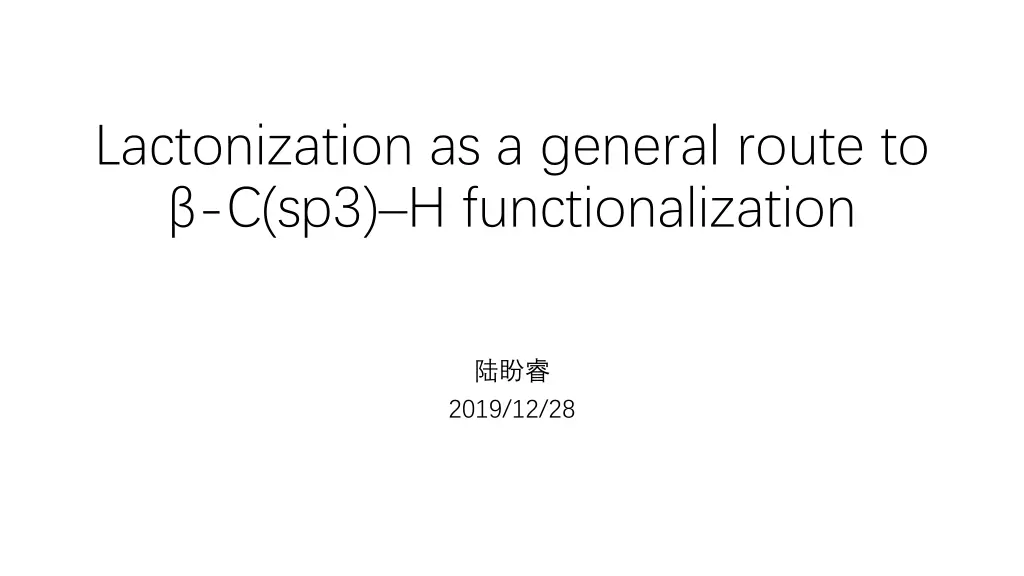
Innovative Approaches to C-H Functionalization in Organic Synthesis
Discover groundbreaking techniques such as lactonization, direct activation of CH bonds, and aromatic C-H bond functionalization for efficient organic molecule synthesis. Explore challenges and advancements in functionalization of aliphatic acids, with insights on reaction mechanisms and optimization strategies.
Download Presentation

Please find below an Image/Link to download the presentation.
The content on the website is provided AS IS for your information and personal use only. It may not be sold, licensed, or shared on other websites without obtaining consent from the author. If you encounter any issues during the download, it is possible that the publisher has removed the file from their server.
You are allowed to download the files provided on this website for personal or commercial use, subject to the condition that they are used lawfully. All files are the property of their respective owners.
The content on the website is provided AS IS for your information and personal use only. It may not be sold, licensed, or shared on other websites without obtaining consent from the author.
E N D
Presentation Transcript
Lactonization as a general route to -C(sp3) H functionalization 2019/12/28
Direct activation of CH bonds Effective method to synthesize various organic molecules Transition metal catalysis Direct group Ligand accelerated catalysis
Direct activation of CH bonds Effective method to synthesize various organic molecules Aromatic C-H Bond Functionalization
Aromatic C-H Bond Functionalization Qi, Meta-C-H Bond Activation, 2012
Functionalization of the -CH of aliphatic acids Importance: A valuable synthetic disconnection that complements a wide range of conjugate addition reactions Challenge: No widely applicable method
Functionalization of the -CH of aliphatic acids C C bond formations: alkylation reactions: primary alkyl iodide or alkyl boron coupling partners olefination reactions: electron-deficient olefins alkynylation: silyl acetylene bromide arylation reactions are only compatible with aryl iodides C X bond-forming reactions based on -C H activation of free aliphatic acids have not yet been realized. Jin-Quan Yu et al. Nature 2019
Purpose A one-for-all -lactonization strategy: -Lactones are strained heterocycles react with a wide range of nucleophiles valuable synthetic intermediates Jin-Quan Yu et al. Nature 2019
Challenge Mixture of K2PtCl4 & K2PtCl6 Lack of mono-selectivity Low nucleophilicity of the carboxylic acid, the strain generated in forming a four-membered ring Pd(IV) intermediates could readily undergo various reductive elimination to form non-cyclic C O bond formation products Jin-Quan Yu et al. Nature 2019
Optimize reaction conditions Jin-Quan Yu et al. Nature 2019
Optimize reaction conditions Jin-Quan Yu et al. Nature 2019
Ligand-accelerated Pd(II)-catalysed CH activation Jin-Quan Yu et al. Nature 2019
Explored the scope of this methodology Jin-Quan Yu et al. Nature 2019
Key advantages (1) the inexpensive oxidant TBHP; (2) tolerant of air and moisture; (3) reliably scale-up; (4) aqueous wash delivers the product without chromatography. Jin-Quan Yu et al. Nature 2019
Summary Lack of mono-selectivity Higherselectivity Use of expensive oxidants Cheap oxidants Limited scope Wide application Need different directing groups Same directing group Industrial-scale manufacturing






















